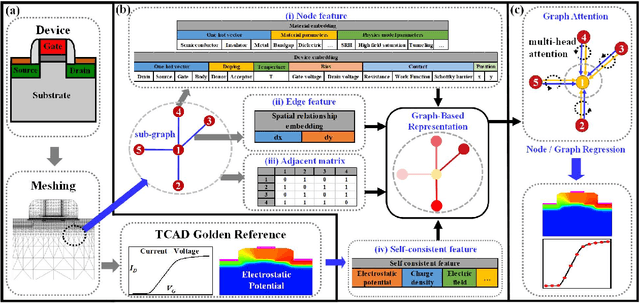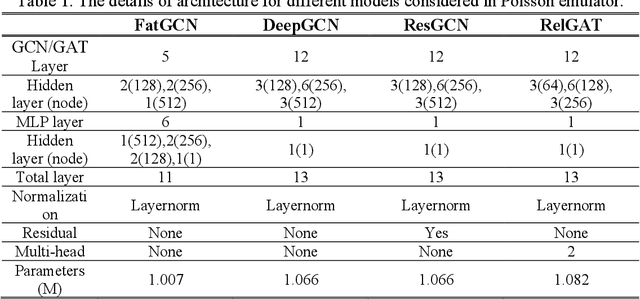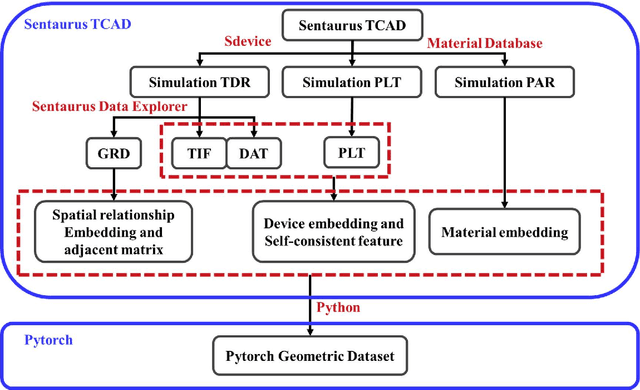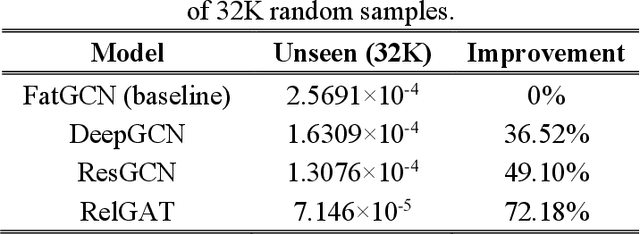Revolutionizing TCAD Simulations with Universal Device Encoding and Graph Attention Networks
Paper and Code
Aug 01, 2023



An innovative methodology that leverages artificial intelligence (AI) and graph representation for semiconductor device encoding in TCAD device simulation is proposed. A graph-based universal encoding scheme is presented that not only considers material-level and device-level embeddings, but also introduces a novel spatial relationship embedding inspired by interpolation operations typically used in finite element meshing. Universal physical laws from device simulations are leveraged for comprehensive data-driven modeling, which encompasses surrogate Poisson emulation and current-voltage (IV) prediction based on drift-diffusion model. Both are achieved using a novel graph attention network, referred to as RelGAT. Comprehensive technical details based on the device simulator Sentaurus TCAD are presented, empowering researchers to adopt the proposed AI-driven Electronic Design Automation (EDA) solution at the device level.
 Add to Chrome
Add to Chrome Add to Firefox
Add to Firefox Add to Edge
Add to Edge